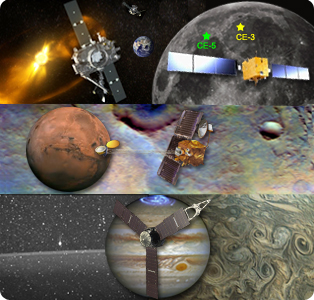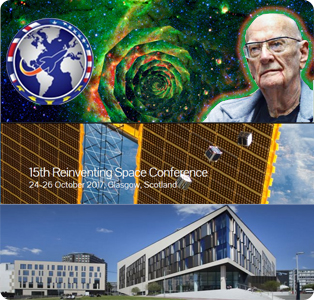Solar System Orbiter Encounters at the Moon, Sun, Mars, Jupiter
|
MONDAY Ongoing…
|

![]() = All times
= All times
for terrestrial events in local time unless noted.
![]() = All times for international terrestrial events in local time unless noted.
= All times for international terrestrial events in local time unless noted.
![]() = All times for space events, and…
= All times for space events, and…
![]() = All times for international space / astro events in Hawaii Standard Time unless noted. Add 10 hours to obtain UT (‘Universal Time;’ Greenwich, England).
= All times for international space / astro events in Hawaii Standard Time unless noted. Add 10 hours to obtain UT (‘Universal Time;’ Greenwich, England).
Weekly Planet Watch – Evening Planets: Saturn (SW), Uranus (E), Neptune (SE); Morning Planets: Mars (E), Venus (E).
British Interplanetary Society Advancing Space Exploration Development
|
Continued from…
TUESDAY
|
![]() Oct 24 — Juno, Perijove 9 / 8th Science Close Flyby, Jupiter Orbit: NASA craft in 53-day orbit to come within ~3,500 km of Jupiter cloud tops during Perijove 9, its 9th close flyby of Jupiter and 8th science flyby with instruments turned on.
Oct 24 — Juno, Perijove 9 / 8th Science Close Flyby, Jupiter Orbit: NASA craft in 53-day orbit to come within ~3,500 km of Jupiter cloud tops during Perijove 9, its 9th close flyby of Jupiter and 8th science flyby with instruments turned on.
![]() Oct 24 — Kennedy Space Center, NASA, Cape Canaveral FL: NASA Kennedy Space Center Business Opportunities Expo 2017.
Oct 24 — Kennedy Space Center, NASA, Cape Canaveral FL: NASA Kennedy Space Center Business Opportunities Expo 2017.
![]() Oct 24 — National Radio Astronomy Observatory, Associated Universities Inc., Charlottesville VA: 2017 Jansky Lecturer: Dr. Bernard Fanaroff speaks on Observing the Universe from Africa: Linking Radio Astronomy and Development.
Oct 24 — National Radio Astronomy Observatory, Associated Universities Inc., Charlottesville VA: 2017 Jansky Lecturer: Dr. Bernard Fanaroff speaks on Observing the Universe from Africa: Linking Radio Astronomy and Development.
![]() Oct 24 — The Space Show, Online / Tiburon CA: Dr. David Livingston talks with Paddy Neumann of Neumann Space Australia.
Oct 24 — The Space Show, Online / Tiburon CA: Dr. David Livingston talks with Paddy Neumann of Neumann Space Australia.
![]() Oct 24-25 — University of Texas at Austin Department of Astronomy, McDonald Observatory, Austin TX: Frank N. Bash Symposium 2017: New Horizons in Astronomy.
Oct 24-25 — University of Texas at Austin Department of Astronomy, McDonald Observatory, Austin TX: Frank N. Bash Symposium 2017: New Horizons in Astronomy.
![]() Oct 24-26 — RISpace, British Interplanetary Society, Glasgow, United Kingdom: 15th Reinventing Space Conference; at Strathclyde University Technology & Innovation Centre.
Oct 24-26 — RISpace, British Interplanetary Society, Glasgow, United Kingdom: 15th Reinventing Space Conference; at Strathclyde University Technology & Innovation Centre.
![]() Oct 24-26 — American Astronautical Society, Huntsville AL: 10th Wernher von Braun Memorial Symposium (2017): Gateways in Space: Exploration, Security, and Commerce.
Oct 24-26 — American Astronautical Society, Huntsville AL: 10th Wernher von Braun Memorial Symposium (2017): Gateways in Space: Exploration, Security, and Commerce.
![]() Oct 24-26 — DLR, OHB, Airbus Defence & Space, Bremen Invest, ESA, NASA Tech Briefs, et al, Bremen, Germany: Space Tech Expo Europe 2017.
Oct 24-26 — DLR, OHB, Airbus Defence & Space, Bremen Invest, ESA, NASA Tech Briefs, et al, Bremen, Germany: Space Tech Expo Europe 2017.
![]() Oct 24 — Moon: 3.2° N of Saturn, 02:00; at apogee (distance 405,151 km), 16:00.
Oct 24 — Moon: 3.2° N of Saturn, 02:00; at apogee (distance 405,151 km), 16:00.
![]() Oct 24 — Aten Asteroid 2016 GK135: Near-Earth Flyby (0.077 AU).
Oct 24 — Aten Asteroid 2016 GK135: Near-Earth Flyby (0.077 AU).
![]() Oct 24 — Aten Asteroid 2008 TC4: Near-Earth Flyby (0.086 AU).
Oct 24 — Aten Asteroid 2008 TC4: Near-Earth Flyby (0.086 AU).
WEDNESDAY
![]() Oct 25 — NASA HQ, Washington DC: Lecture: Pale Rainbow Dots – The Search for Other Earths; Giada Arney and Shawn Domagal-Goldman from GSFC.
Oct 25 — NASA HQ, Washington DC: Lecture: Pale Rainbow Dots – The Search for Other Earths; Giada Arney and Shawn Domagal-Goldman from GSFC.
![]() Oct 25-26 — The National Academies of Sciences, Engineering and Medicine, Washington DC: 14th Group on Earth Observations (GEO) Plenary Meeting; will highlight and promote the role, applications and opportunities to use Earth observations.
Oct 25-26 — The National Academies of Sciences, Engineering and Medicine, Washington DC: 14th Group on Earth Observations (GEO) Plenary Meeting; will highlight and promote the role, applications and opportunities to use Earth observations.
![]() Oct 25-27 — Japan External Trade Organization, Space Florida, Enterprise Florida, Orlando & Cape Canaveral FL: Florida-Japan Aerospace and Aviation Summit; JAXA, Japan Aerospace Corporation and ~30 manufactures to visit Florida and learn about commercial space opportunities.
Oct 25-27 — Japan External Trade Organization, Space Florida, Enterprise Florida, Orlando & Cape Canaveral FL: Florida-Japan Aerospace and Aviation Summit; JAXA, Japan Aerospace Corporation and ~30 manufactures to visit Florida and learn about commercial space opportunities.
![]() Oct 25 — Apollo Asteroid 2017 TL4: Near-Earth Flyby (0.038 AU).
Oct 25 — Apollo Asteroid 2017 TL4: Near-Earth Flyby (0.038 AU).
![]() Oct 25 — Aten Asteroid 2013 UR5: Near-Earth Flyby (0.085 AU).
Oct 25 — Aten Asteroid 2013 UR5: Near-Earth Flyby (0.085 AU).
![]() Oct 25 — Apollo Asteroid 2017 FT102: Near-Earth Flyby (0.100 AU).
Oct 25 — Apollo Asteroid 2017 FT102: Near-Earth Flyby (0.100 AU).
THURSDAY
![]() NET Oct 26 — Orbital ATK, Launch Minotaur-C / SkySat, Vandenberg AFB CA: Orbital ATK Minotaur-C rocket to launch 6 SkySat Earth observation satellites for Planet and several CubeSat secondary payloads for university and corporate customers.
NET Oct 26 — Orbital ATK, Launch Minotaur-C / SkySat, Vandenberg AFB CA: Orbital ATK Minotaur-C rocket to launch 6 SkySat Earth observation satellites for Planet and several CubeSat secondary payloads for university and corporate customers.
![]() Oct 26 — STEREO (Solar Terrestrial Relations Observatory) A & B, Heliocentric Orbit: NASA craft imaging Sun and solar phenomena enter 12th year in space today.
Oct 26 — STEREO (Solar Terrestrial Relations Observatory) A & B, Heliocentric Orbit: NASA craft imaging Sun and solar phenomena enter 12th year in space today.
![]() Oct 26 — British Interplanetary Society, Arthur C. Clarke Foundation, Glasgow, United Kingdom: Sir Arthur C. Clarke 100th anniversary dinner; following Reinventing Space Conference.
Oct 26 — British Interplanetary Society, Arthur C. Clarke Foundation, Glasgow, United Kingdom: Sir Arthur C. Clarke 100th anniversary dinner; following Reinventing Space Conference.
![]() Oct 26 — SETI Institute, Menlo Park CA: The Anthropocene: What Now?; David Grinspoon from Planetary Science Institute, followed by Seth Shostak of SETI.
Oct 26 — SETI Institute, Menlo Park CA: The Anthropocene: What Now?; David Grinspoon from Planetary Science Institute, followed by Seth Shostak of SETI.
![]() Oct 26 — Moon: 2.3° N of Pluto, 01:00; 1.9° N of comet 41P Tuttle-Giacobini-Kresak, 19:00.
Oct 26 — Moon: 2.3° N of Pluto, 01:00; 1.9° N of comet 41P Tuttle-Giacobini-Kresak, 19:00.
![]() Oct 26 — Jupiter: At conjunction with the Sun, 08:00.
Oct 26 — Jupiter: At conjunction with the Sun, 08:00.
![]() Oct 26 — Apollo Asteroid 2017 SC14: Near-Earth Flyby (0.079 AU).
Oct 26 — Apollo Asteroid 2017 SC14: Near-Earth Flyby (0.079 AU).
![]() Oct 26 — Apollo Asteroid 2017 QV34: Near-Earth Flyby (0.083 AU).
Oct 26 — Apollo Asteroid 2017 QV34: Near-Earth Flyby (0.083 AU).
FRIDAY
![]() Oct 27 — National Radio Astronomy Observatory, Associated Universities Inc., Green Bank WV: 2017 Jansky Lecturer: Dr. Bernard Fanaroff speaks on Observing the Universe from Africa: Linking Radio Astronomy and Development.
Oct 27 — National Radio Astronomy Observatory, Associated Universities Inc., Green Bank WV: 2017 Jansky Lecturer: Dr. Bernard Fanaroff speaks on Observing the Universe from Africa: Linking Radio Astronomy and Development.
![]() Oct 27 — Space Center Houston, Houston TX: Lunch with an Astronaut, Jerry Ross, adult US$69.95.
Oct 27 — Space Center Houston, Houston TX: Lunch with an Astronaut, Jerry Ross, adult US$69.95.
![]() Oct 27-28 — MIT Management Executive Education, NYU Stern, Ivy, Shapr, NYC NY: Synergy Global Forum; featuring Sir Richard Branson, at Madison Square Garden.
Oct 27-28 — MIT Management Executive Education, NYU Stern, Ivy, Shapr, NYC NY: Synergy Global Forum; featuring Sir Richard Branson, at Madison Square Garden.
![]() Oct 27-29 — Maker Faire, Westercon 71, Denver CO: MileHiCon 2017; combining science fiction, astronomy, space.
Oct 27-29 — Maker Faire, Westercon 71, Denver CO: MileHiCon 2017; combining science fiction, astronomy, space.
![]() Oct 27 — Moon: At first quarter, 12:22.
Oct 27 — Moon: At first quarter, 12:22.
![]() Oct 26 — Amor Asteroid 2017 TW4: Near-Earth Flyby (0.070 AU).
Oct 26 — Amor Asteroid 2017 TW4: Near-Earth Flyby (0.070 AU).
SATURDAY
![]() Oct 28 — International Observe the Moon Night Organization, Global: International Observe the Moon Night 2017; encouraging observation, appreciation, understanding of the Moon and its connection to planetary science & exploration; 1st quarter Moon is considered the best time to observe the Moon due to shallow angle of sunlight hitting surface and illuminating details.
Oct 28 — International Observe the Moon Night Organization, Global: International Observe the Moon Night 2017; encouraging observation, appreciation, understanding of the Moon and its connection to planetary science & exploration; 1st quarter Moon is considered the best time to observe the Moon due to shallow angle of sunlight hitting surface and illuminating details.
![]() Oct 28 — CFHT, W. K. Observatory, UH Institute for Astronomy, Kamuela HI: Solar System Walk 2017; community opportunity to talk with staff from the some of the world’s most productive telescopes and explore the Solar System with Astronomers.
Oct 28 — CFHT, W. K. Observatory, UH Institute for Astronomy, Kamuela HI: Solar System Walk 2017; community opportunity to talk with staff from the some of the world’s most productive telescopes and explore the Solar System with Astronomers.
![]() Oct 28 — British Interplanetary Society, Ghent, Belgium: 4th British Interplanetary Society (BIS) Belgium Annual Space Symposium; Lieven Roesems will talk about Blue Origin, Bart Hendrickx will give a Planetary Exploration Update, Extraterrestrial life challenge by Elizaveta Orlova, Philip Corneille presents on Spacefarers’ wristwatches 1961-2021.
Oct 28 — British Interplanetary Society, Ghent, Belgium: 4th British Interplanetary Society (BIS) Belgium Annual Space Symposium; Lieven Roesems will talk about Blue Origin, Bart Hendrickx will give a Planetary Exploration Update, Extraterrestrial life challenge by Elizaveta Orlova, Philip Corneille presents on Spacefarers’ wristwatches 1961-2021.
SUNDAY
![]() Oct 29 — Standard Time (Europe): Change clocks back 1 hour, from Summer Time to Standard Time.
Oct 29 — Standard Time (Europe): Change clocks back 1 hour, from Summer Time to Standard Time.
![]() Oct 29 — Mercury: At aphelion, 0.4667 AU from the Sun, 02:00.
Oct 29 — Mercury: At aphelion, 0.4667 AU from the Sun, 02:00.

